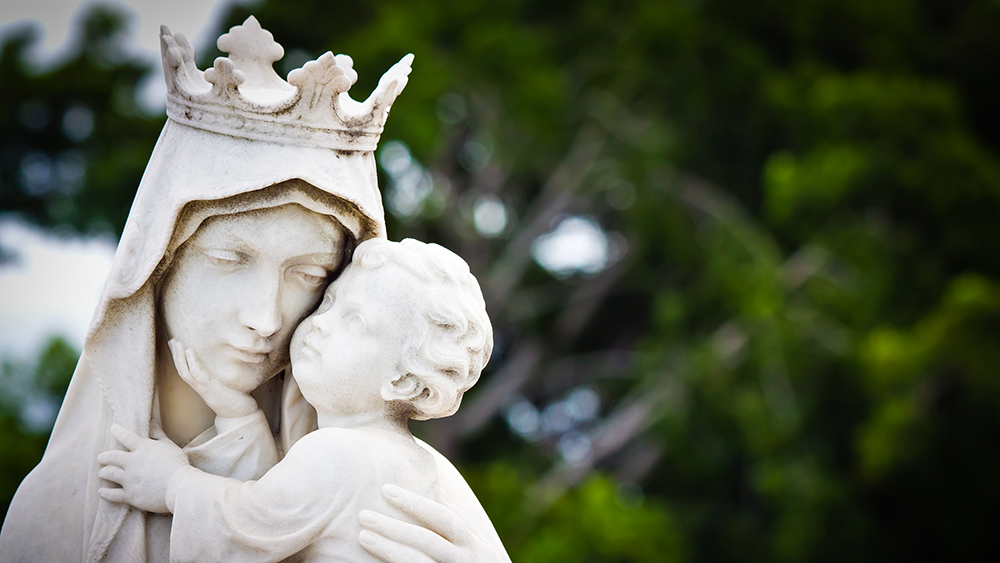Pope Francis decided in 2018 that a new Memorial of Mary, Mother of the Church should be universally celebrated. While the Marian memorial had been celebrated locally in some dioceses and religious communities throughout the world, it will now be celebrated throughout the universal Church in the Ordinary Form of the Roman Rite. The new memorial has a moveable date, since it is part of the Easter cycle, and is fixed to the Monday after Pentecost.
One might ask what is the point of applying such titles to Mary? And why do we celebrate them? As the old maxim states, “de Maria numquam satis” (about Mary, not enough can be said). The reason, as theologian and mariologist Father Hugh Rahner, S.J., explains, is that “whatever is said of God’s eternal wisdom itself, can be applied in a wide sense to the Church, in a narrower sense to Mary, and in a particular way to every faithful soul.”
There are many theological implications that flow from the institution of this liturgical memorial. These are rooted in understanding the Church as the Body of Christ and Mary’s role in the life of the faithful.
The role of Mary
Pope St. Paul VI officially bestowed upon Mary the title of “Mother of the Church” at the closing of the third of the Second Vatican Council in 1964. Traced back to fourth-century origins with St. Ambrose, the title “Mother of the Church” evokes Mary’s spiritual motherhood, which is tied up with the nature of the Church.
Much of Vatican II’s ecclesiology, particularly found in its Dogmatic Constitution on the Church (Lumen Gentium) is developed from the rich understanding of the Church in St. Paul’s theology. Therein the faithful learn of their union with Christ through membership in his body. St. Paul spoke clearly and eloquently of this reality, which he came to know firsthand at his conversion. When knocked to the ground and blinded, the Christian persecutor heard a voice ask him, “Saul, Saul, why are you persecuting me?” (Acts 9:4). With this, it was made clear that Christ identified as one with his followers. Together they constitute a composite, a united whole — in what St. Augustine later described as the totus Christus, the whole Christ — for Christ and the baptized are one body.
St. Augustine put this in its proper Marian context: Mary is “the mother of the members of Christ … having cooperated by charity that faithful might be born in the Church, who are members of that Head.” “Mary gave birth to the One, and the Church gives birth to the Many, who through the One become one,” he said.
Since Mary is the mother of Christ, we who are the members of his body — the Church — are her sons and daughters. The new annual celebration of a memorial recalling her motherhood of the Church is occasion to meditate on this significant reality of the Church’s identity and the implications that flow from it. It is by the same principle that the fathers of Vatican II chose to include a lengthy portion on Mary in Lumen Gentium rather than promulgate a separate document about her.
Church’s model and help
Mary’s union with her Son is inseparable. This new memorial also is intended to foster greater Marian piety because we turn to Mary who is an example for all mankind, particularly the faithful. She is a “preeminent and … wholly unique member of the Church” (LG, No. 53).
Mary’s maternity is found in her obedience, faith, hope and charity. These characteristics are the fertile ground where the Word of God was planted and brought forth abundant life. Supernatural life came to the world by her “fiat,” which brought forth the Life of the World. Mary is, therefore, the New Eve since, as death came through Eve, life comes through her.
Pope St. John Paul II stated that “in her new motherhood in the Spirit, Mary embraces each and every one in the Church, and embraces each and every one through the Church. In this sense Mary, Mother of the Church, is also the Church’s model” (Redemptoris Mater, No. 47).
“In a wholly singular way she cooperated by her obedience, faith, hope and burning charity in the Savior’s work of restoring supernatural life to souls” (LG, No. 61). Mary’s entire life is an aspiration for the members of the Church, whereby she leads us to salvation, offering help to overcome sin and do good through her example and her heavenly aid. She desires nothing but to lead us to her Son.
The exemplary obedience, faith, hope and charity that define Mary must define all Christians. Simply put by Jesus, when he heard a woman shouted praise for the womb that bore him, “Rather, blessed are those who hear the word of God and observe it” (Lk 11:28).
By Mary’s obedience, the Church has a model for living in accord with God’s will. By her faith, the Church learns to bring Christ to the world. By her hope, the Church learns to count on the Lord (see Ps 130: 5). And by her love, the Church learns the path of salvation.
Christians have turned to Mary for her special grace and heavenly aid throughout the centuries, “invoked by the Church under the titles of Advocate, Auxiliatrix, Adjutrix, and Mediatrix” (LG, No. 62). The institution of the new memorial highlighting Mary as
“Mother of the Church” offers yet another opportunity for the members of her Son’s body to appeal to rejoice in the motherly love of the one who is our model and our help.
Michael R. Heinlein is editor of Simply Catholic. Follow him on Twitter @HeinleinMichael.

